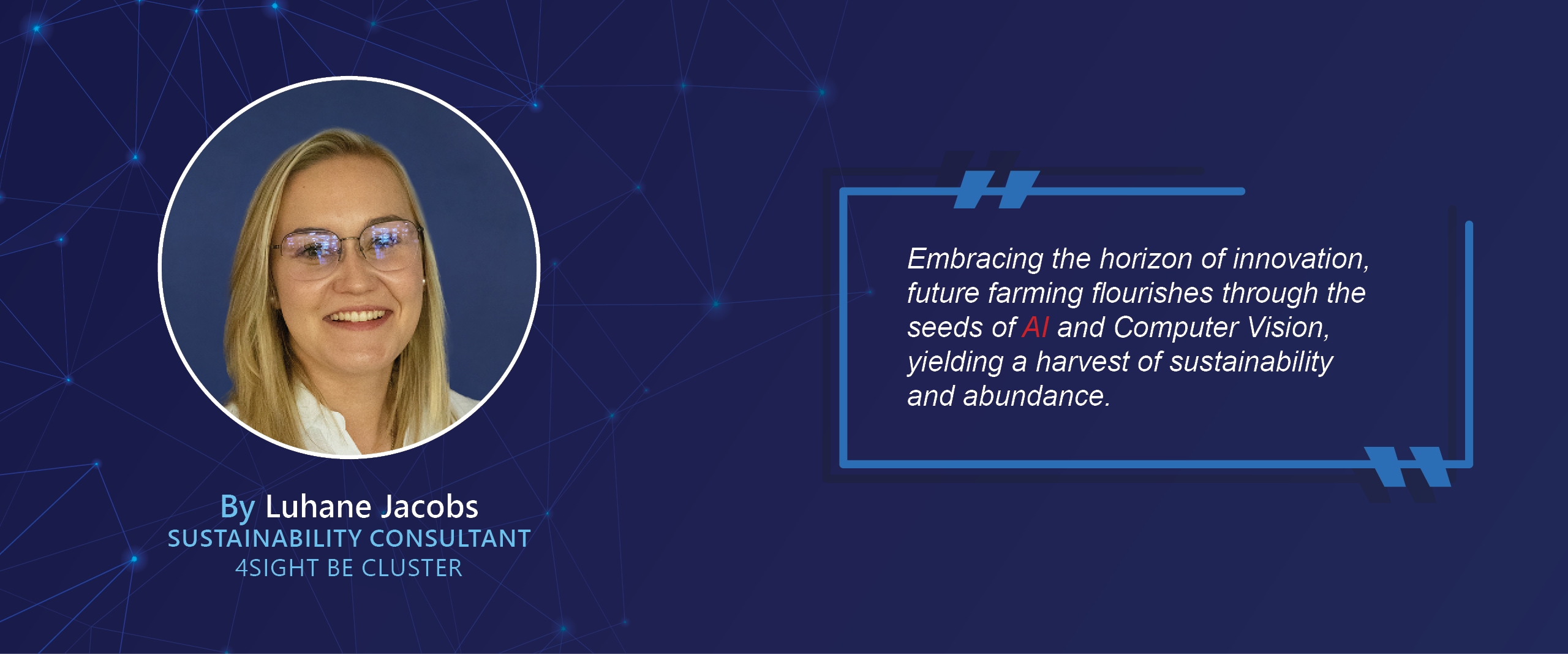Blog - Business Environment
Fields of Vision: Cultivating AI and Computer Vision in Agriculture
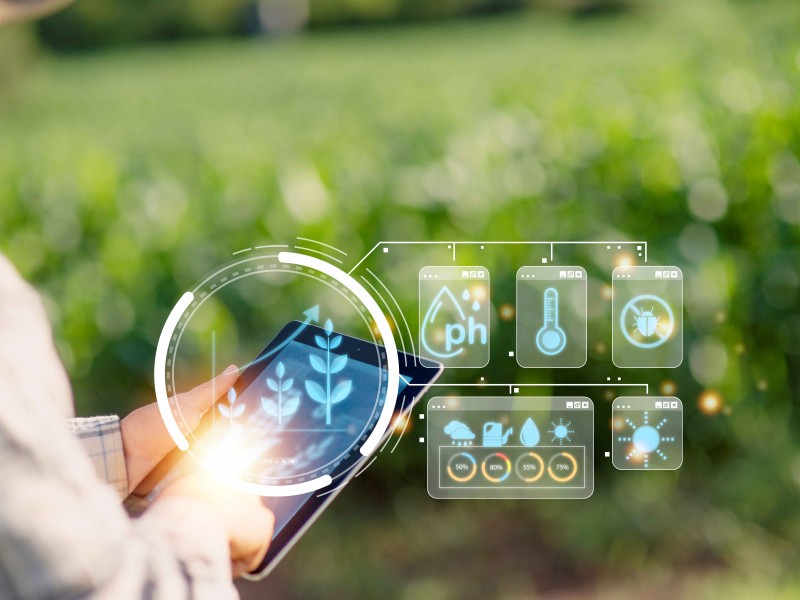
In recent years, the combination of Artificial Intelligence (AI) and Computer Vision has significantly impacted various industries. One area where these technologies hold immense promise is AGRICULTURE. As farmers struggle with challenges such as crop and animal monitoring, quality control and resource optimisation, innovative solutions are essential. In this blog post, we explore how AI Vision is revolutionising farming practices, addressing these challenges, and paving the way for a more sustainable and efficient agricultural sector.
Challenges Faced by Farmers
Traditional farming methods often fail to address the difficult challenges encountered by farmers in their daily operations:
- Crop and livestock health monitoring (Risk Minimisation): Keeping track of plant and livestock health across vast fields is labour-intensive and time-consuming. Early detection of pests and diseases is essential to prevent crop losses.
- Early Disease Detection (Minimise Food Scarcity): Just like in humans, early detection of disease in animals is crucial for effective treatment and prevention of spreading. However, the challenge with animals is that they may not always exhibit obvious symptoms until a disease has progressed significantly. Regular monitoring can help detect subtle changes in behaviour, appetite, or physical condition that may indicate underlying health issues.
- Quality Assurance (Maximising Yield): Ensuring consistent quality in produce requires careful inspections.
- Resource Optimisation (Cost Reduction): Efficiently allocating water, fertilisers, pesticides, and resources is crucial for sustainable farming.
The Role of AI Vision (AI driven Vision)
Enter AI Vision – a game-changer for agriculture.
AI Vision refers to a subfield of AI that enables devices to interpret and analyse visual data from images or videos. In agriculture, this technology leverages cameras, drones, and sensors to extract the necessary and valuable insights from visual information. From monitoring crop health to detecting pests, AI vision offers a range of applications that empower farmers to make informed decisions.
4AI Vision Explained
4AI Vision is a cloud workspace with end-to-end tools to deliver real-time computer vision and deep learning systems. The 4AI platform provides fully managed, secure, and scalable edge-to-cloud software infrastructure. 4AI Vision can enable and support the:
- Build, deploy and monitoring of custom AI vision systems on scalable infrastructure.
- Modern low-code tools that make it easier for both AI experts and beginners.
- Integrated marketplace to buy and sell ready-to-use applications and add-ons.
- Built-in security, access management and data encryption.
4AI Vision constantly integrates state-of-the-art image recognition and video analysis software that facilitates the following capabilities:
- Video Stream input from files, single or multiple cameras
- Pre-processing, Region of Interest, Polygon, Heatmaps
- Object detection, Person detection, Animal Detection.
- Pose estimation, Key point detection and Key point tracking.
- Object Segmentation, Image Segmentation
- Object classification, Image Classification
- Custom AI model integration
By combining these capabilities, the solution can achieve endless possibilities.
Projected Growth of AI Vision and the Adoption of Innovative Solutions
The adoption of AI in agriculture is on the rise. As more farmers recognise the benefits of AI Vision, we anticipate exponential growth in its implementation. AI-driven solutions are reshaping the landscape of modern farming. In the following section, we delve into specific applications of AI vision in agriculture, exploring how it impacts various farming aspects.
Example of Applications of AI Vision
Livestock Farming:
Addressing food security challenges, AI vision systems are essential in livestock farming, aiding in data collection and decision-making. By analysing images or video feeds using neural networks, these systems offer automatic, non-invasive, and accurate monitoring. The application encompasses various aspects such as house management, behaviour analysis, detecting anomalies, weight monitoring and feeding rates, counting and inspection. These applications improve animal welfare, production efficiency and quality, and overall monitoring.
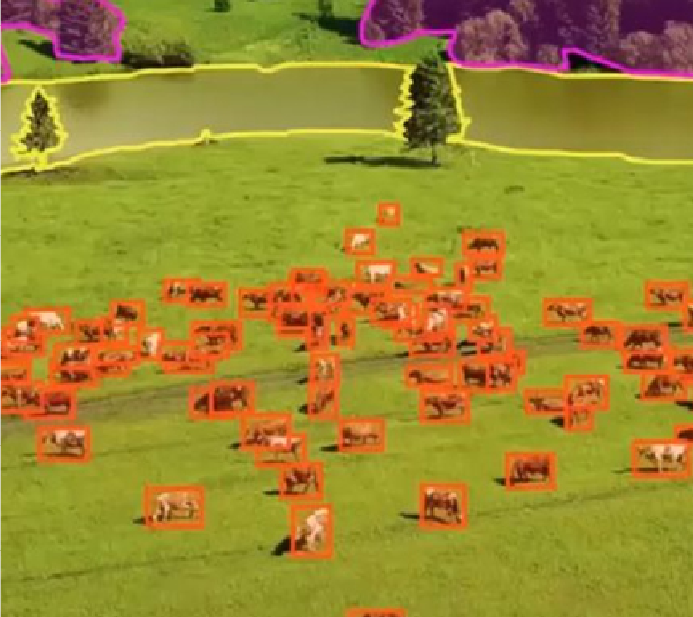
Source: https://www.labellerr.com/blog/smart-animal-livestock-management-use-cases-using-vision-ai/
Crop Monitoring
AI Vision analyses plant health, growth patterns, and stress factors. It uses images from drones or cameras to assess crop conditions. By predicting yields, farmers can optimise resource allocation and plan harvests effectively.
Farmers can use this information to calculate the best time to harvest maximum yield and quality.
Yield Estimations with Fruit and Vegetable Counting
Large-scale farming companies rely on yield estimation for preharvest planning, crucial for logistics like transportation and labour allocation. Accurate prediction prevents unnecessary costs from overestimation and minimises waste due to underestimation, while optimising cultivation practices and disease prevention. Deep convolutional network algorithms enable precise yield prediction and automatic counting of fruits and vegetables from images, overcoming challenges like occlusion and varying object sizes. Manual counting is labour-intensive and costly, making AI vision methods, such as on-tree orange counting, invaluable.
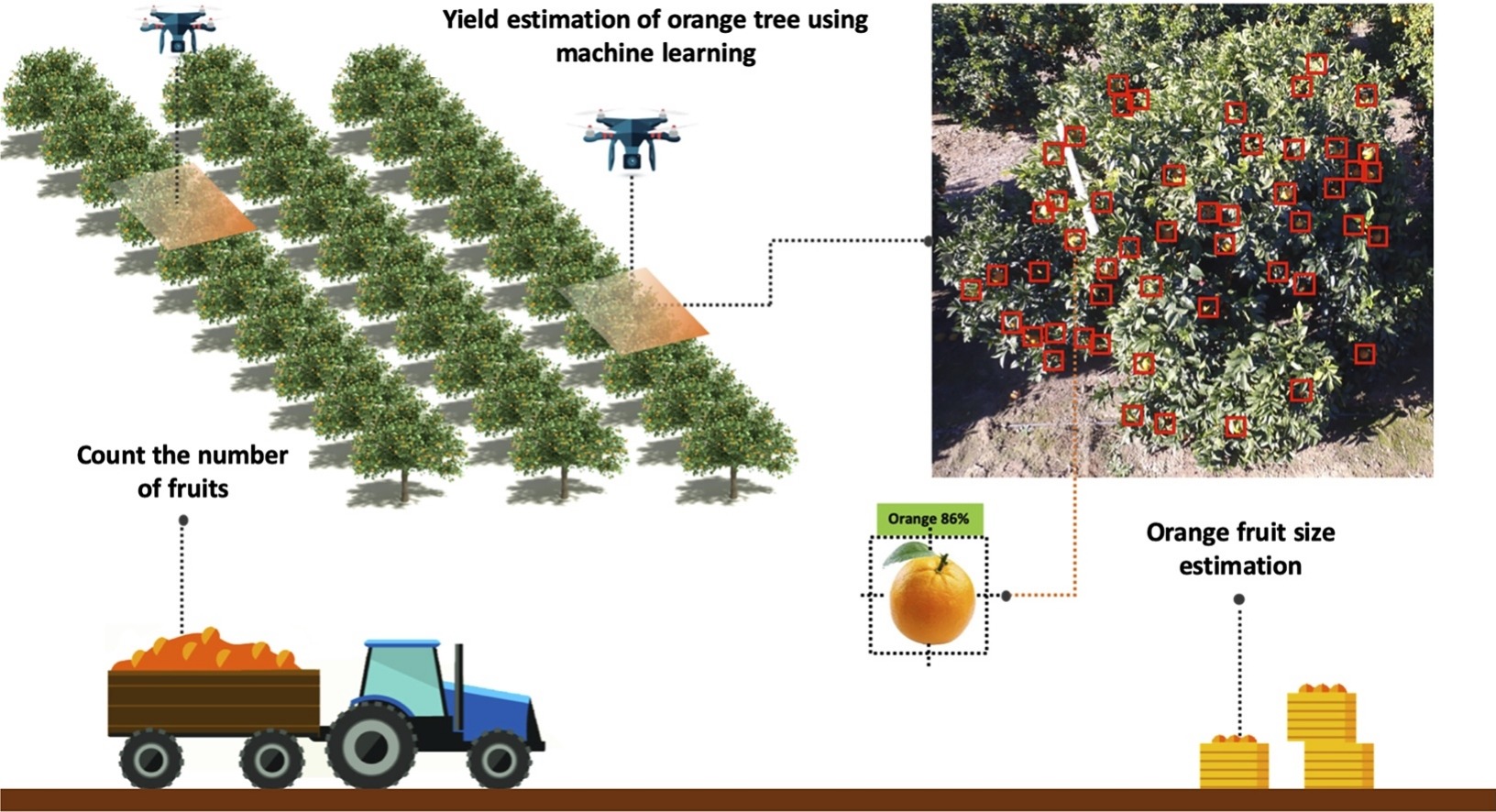
Fish Farming
AI Vision plays a crucial role in precision fish farming by enabling automatic fish detection. These applications are particularly effective for fish species identification, counting and behaviour pattern analysis. Additionally, AI Vision facilitates intelligent feeding systems through underwater image processing and fish parameter estimation. It offers fish-counting solutions and extends to extreme solutions like assessing fishing net integrity and safety using machine learning.
Precision Farming
AI Vision enhanced feasibility and crop yields through precision farming, utilising real-time weather, soil, and crop data for optimised planting, irrigation, and fertilisation. Applications analyse aerial images to detect issues like disease and nutrient deficiencies, guiding resource allocation by changing machinery variables. Pre-trained models predict irrigation needs based on crop images, reducing water waste and pesticide use while boosting yields.
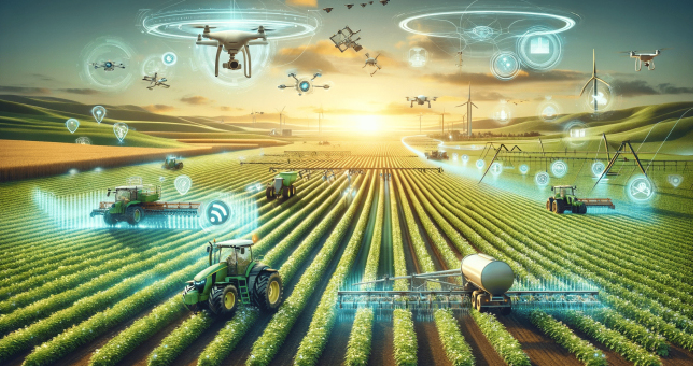
Source: https://igrownews.com/precision-agriculture-market-growth-technological-revolution/
Weed Detection
Weed detection using AI Vision is a powerful tool for farmers. By analysing images or video from cameras or drones, it enables precise identification of weed-infested areas in fields. This targeted approach allows farmers to apply herbicides and pesticides only where needed, reducing overall chemical usage, and minimising environmental harm.
Navigating Obstacles: Crafting an Action Plan
As a digital transformation company, we understand that integrating AI and computer vision into agriculture presents two key obstacles: adaptation and cost. However, we are dedicated to overcoming these obstacles by collaborating closely with you. Our strategy involves crafting a customised roadmap that addresses your unique requirements. This roadmap will guide you through actionable steps, highlight essential milestones, and facilitate a seamless transition. Through education, ongoing training, and unwavering support, we empower you to navigate the adoption process successfully. Together, we'll harness 4AI Vision’s transformative potential to enhance productivity, sustainability, and overall success in agriculture.
